The glorious 50’s. Rock n’ roll, pedal pushers, and the meteoric rise of the ad man.

The advertising boom of the 1950’s saw ad industry billings grow six-fold. As the war ended and the American Dream blossomed into the imagination of working-class America, the golden era of advertising was born.
From David Ogilvy to Leo Burnett, ad man greats capitalised on the flourish in US consumerism, using guile, creative and captivating ad copy.
With expert advice from these advertising icons, we walk you through 3 copywriting tips you can use today to have you writing like Don Draper.
Do Your Research
“Advertising people who ignore research are as dangerous as generals who ignore decodes of enemy signals” – David Ogilvy
These words of advice from the father of advertising are as relevant today as they were in the heyday of ad men and roasted cigars. Copy is only ever as good as the preparation behind it.
And though conducting thorough research may seem daunting, it’s really as simple as finding the answer to these two key questions:
What am I writing about?
In the world of content marketing, this is all about knowing your product and its core benefits.
While you might think you already know everything about your product or service, it is important to dive into the meat and bones of what makes your product sell.
Ogilvy suggests to get to know your product on a deeper and more intimate level.
“Before actually writing the copy, I write down every conceivable fact and selling idea. Then I get them organised and relate them to research and the copy platform.”
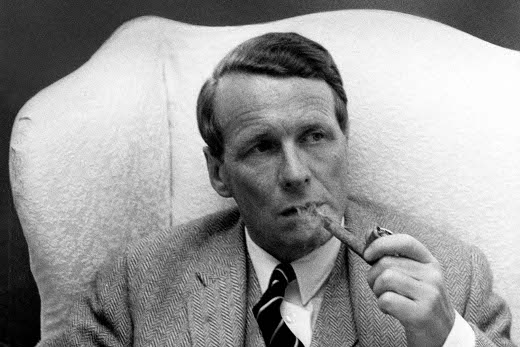
Make a comprehensive list of every possible selling point, fact or idea relating to your product. Cover all angles of your business, and don’t be afraid to get detailed and specific.
Perhaps you will discover something that was previously overlooked, or maybe come to find you had been targeting the wrong selling point.
Once you have identified your key talking points, refine that list by shifting focus to the consumer.
Who am I writing for?
“If you can’t turn yourself into your customer, you probably shouldn’t be in the ad writing business at all.” – Leo Burnett
A good copywriter must not only be a captivating wordsmith, an expert researcher and a pragmatic editor, but also a student of psychology, sociology and human nature.
When creating copy, true value comes in knowing exactly what your audience are thinking and what their true needs are. Put yourself in their shoes and try to understand exactly what your audience loves about your product.
Remember, this is not what you love about your product, or what you think consumers love, but what it is they truly love.
Use their language to create a message that resonates with the reader because only then are you truly able to write engaging content that persuades and sells.
The better we understand how our readers think, speak and search the better we can connect with them.
“If you’re trying to persuade people to do something, or buy something, it seems to me you should use their language, the language they use every day, the language in which they think.” – David Ogilvy
Take the time to thoroughly understand both your product and your audience, because whether it’s for your blog, website, emails or adverts, good content is born from good research.
Catchy Headlines
The catchy headline. A hallmark of great 1950’s advertising.
An era where campaigns like The Marlboro Man and Lucky Strikes’ “It’s Toasted” took the US market by storm.
Behind the most successful ad campaigns of the time there often lay a catchy headline or slogan whose purpose was to hook the consumer in and capture the imagination.
For Ogilvy, grabbing the attention of the reader and encouraging them to find out more was more than half the battle.
“On the average, five times as many people read the headline as read the body copy. When you have written your headline, you have spent eighty cents out of your dollar.”
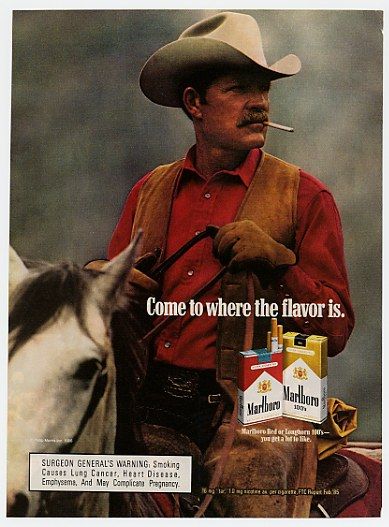
In today’s world of shareable digital media and social media marketing, the headline is as important as ever.
A recent study from Copyblogger shows that 80% of readers never make it past the headline. Meaning only 2 out of 10 readers will actually go on to read the rest of your post.
Another test from Upworthy shows that headlines can vary article traffic as much as 500%.
These figures go some way to prove the importance of a good headline in today’s digital landscape.
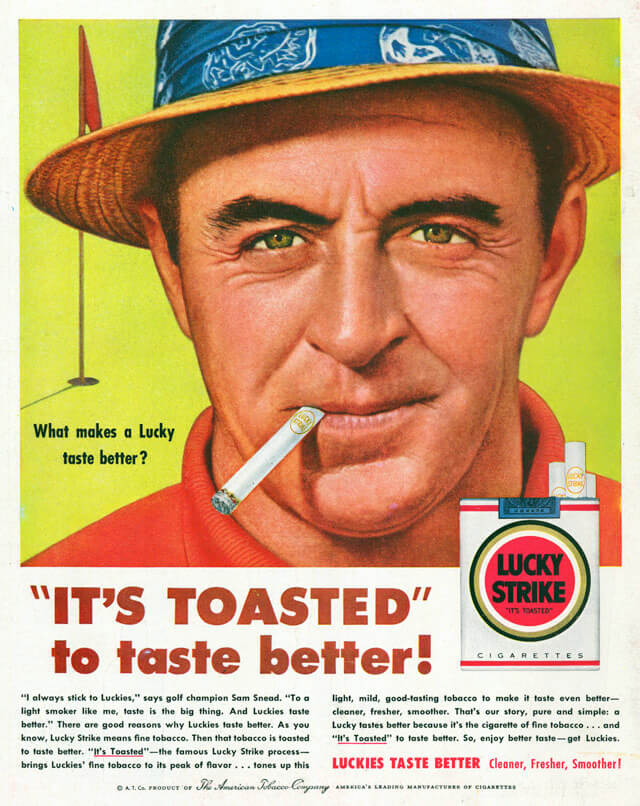
They key takeaway from this as a copywriter is that there is an extraordinary amount of value to be gained from honing your headline writing skills.
Put as much time into creating a killer headline, as you do writing the body of work behind it.
“I try to write 20 alternative headlines for every advertisement. And I never select the final headline without asking the opinion of other people in the agency. In some cases, I seek the help of the research department and get them to do a split-run on a battery of headlines.” – David Ogilvy
Even the most successful campaigns of today thrive off using these classic ad man tactics. Take Nike’s “Just do it” campaign which launched in 1988, and has since become a modern marketing phenomenon.
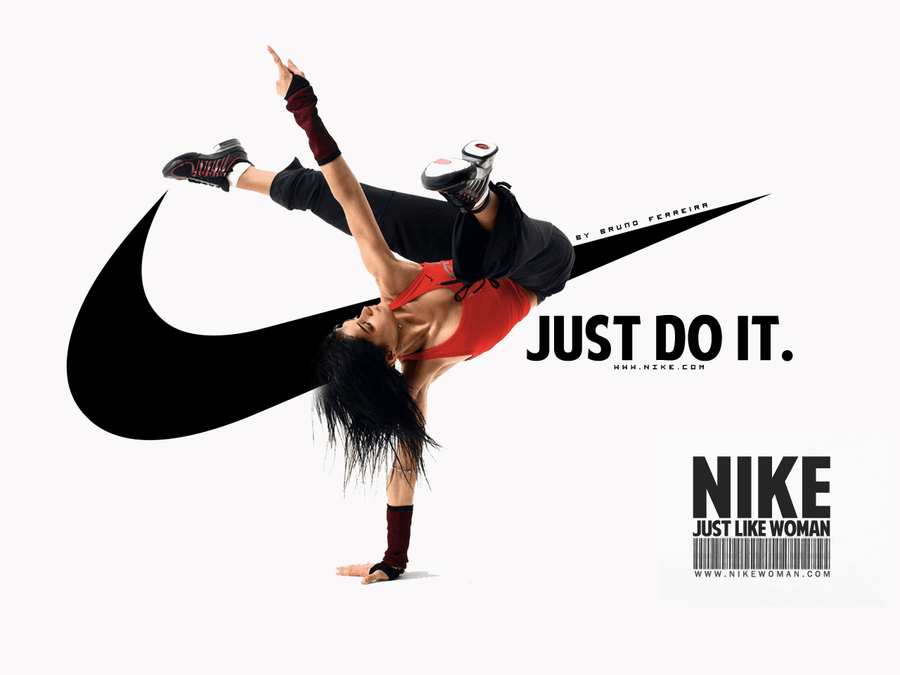
A catchy headline goes a long way in the world of advertising and content marketing so never underestimate its importance.
For a more detailed look at writing snappy headlines in today’s digital era take a look at these headline writing tips from our good friend Rand Fishkin.
Keep It Simple
“Keep it simple, but significant” – Don Draper
Simplicity. A classic trait of the very best 1950’s adverts.
From visuals to copy, the campaigns of yesteryear were simple.
Take the Volkswagen’s iconic “think small” campaign.
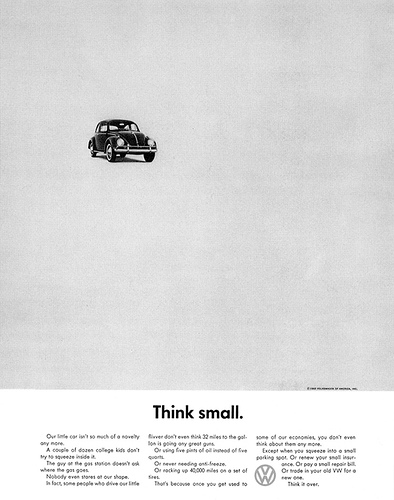
When the advert was launched in the late 1950s it broke new ground in the design of simple but effective advertising.
A small car, a concise tongue-in-cheek headline, and a small block of text explaining the product. There isn’t much to it, but it sticks in people’s minds.
Even today we can see the tactic of simplicity being adopted to great success in the world of advertising.
Apple’s campaign for the the iPod throughout the 2000’s used nothing more than a dancing silhouette to communicate the core benefit of its ground-breaking product.

When it comes to copywriting and marketing as a whole, simple works.
A simple advertisement conveys one key message, making it easy for the consumer to understand how that product can benefit them.
And this is important because in the world of 2016 people have less time to spare than ever. Gone are the days of kicking back with a glass of old fashioned, Mr.Draper.

We need information fast and keeping content focused on one or two main selling points is always going to triumph over an over-complicated spiel.
No matter what the platform, whether it’s digital, social or traditional media, keep it simple and you will be rewarded.
From new-era 1950’s to tech-savvy 2016, the marketing landscape in which we live in has evolved dramatically. But while the world around us has very much changed, there are still lessons to be learned from the greats of the past.
Next time you sit down to create that killer piece of content, stop and remember what those that came before would do.
Do your research, create that hooking headline, and deliver a simple message to persuade and sell.
After all, if it’s worked since the 50’s, it’ll probably work for you.

Comments (0)